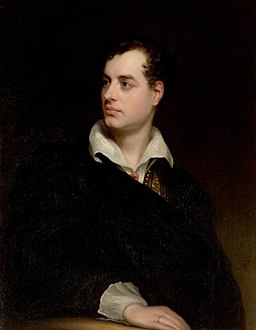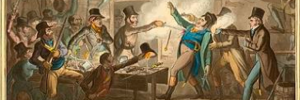
Lord Byron, an audacious Romantic poet, is fondly remembered not just for his poetry but also for his passion-filled life. His relationships with women were indeed complex and often laden with controversy. Unsurprisingly, these encounters significantly influenced his works, shedding light on his views on women and society during the Georgian era.
A Look into Lord Byron’s Perception of Women
An excellent example of Lord Byron’s perspective is his comparison of women to porcupines in his comic epic, “Don Juan”. In this work, he artistically draws an image of women as seemingly harmless, yet capable of inflicting considerable discomfort when one gets too close. This symbolism perhaps mirrors his tumultuous romantic relationships.
Women and Fashion in the Georgian Era
During the Georgian period, women’s fashion was marked by intricate designs, complex layers, pleats, and frills. These dresses required numerous dress pins to hold them together. With the multitude of these pins, Byron amusingly likened women in their elaborate Georgian attire to prickly porcupines.
Beyond this humour, Byron’s metaphor also critiques the sociocultural norms of his era. He possibly viewed dress pins as symbols of societal constraints that women had to grapple with. A porcupine, a creature that uses its quills defensively, encapsulates the dual purpose of women’s fashion during the Georgian era – a display of social status and a shield against an intrusive society. Byron’s metaphor captures this paradox, weaving together themes of allure, protection, beauty, and defence.
Dress Pins: A Subtle Show of Power
The porcupine analogy suggests a subtle form of power and resistance women found within their cultural practices. Similar to a porcupine raising its quills, a woman, armed with her dress pins, could assert respect, establish personal space, and express her identity.
Lord Byron’s depiction of women as porcupines is not simply a playful jest. It’s an insightful commentary on Georgian society. He critiques societal norms while also highlighting the ways women navigated these boundaries. This reflection testifies to Byron’s astute understanding of his environment, bolstering his reputation as one of the most perceptive poets of the Romantic period.
This portrayal of women also reveals Byron’s self-awareness of his complexities and shortcomings. His comparison of women to porcupines elucidates his perception of them as enchanting yet potentially hazardous, emotionally inscrutable, and difficult to comprehend.
The Human Pursuit of Connection
Despite the spiky imagery, Byron’s work underscores our enduring pursuit of connection, intimacy, and understanding. Like the prickly quills of a porcupine, this pursuit is often fraught with risks. In all, Byron’s vivid depiction and critique of women in the Georgian era offer a profound exploration of human relationships, with all their complexities and contradictions. As such, “Poet Lord Byron” remains an enduring figure, not just in Romantic literature, but in the broader discourse on societal norms and human relationships.
Byron’s Don Juan: A Window into the Poet’s World
In “Don Juan,” one of his most renowned works, Byron deftly uses the medium of his poetry to satirize the Georgian society he was a part of. Drawing on his personal experiences, he fashioned Don Juan, his rakish protagonist, as a mirror to his own life. The poem’s women, portrayed as prickly porcupines, epitomize the challenges Byron encountered in his relationships. His insightful portrayals offer readers a rich understanding of his world.
In characterizing women as porcupines, Byron was also indirectly critiquing the patriarchal norms of his time. Women, seen as lesser beings, were expected to adorn themselves to appeal to the male gaze, and yet, they had to maintain a distance – a double standard that Byron cleverly exposes through his porcupine analogy.
Lord Byron’s representations often reflected the period’s fascination with emotion and human experiences. His use of prickly imagery wasn’t simply a personal reflection but an exploration of human relationships in their complexity and contradiction. Despite the painful imagery, Byron underscores the never-ending human pursuit of connection, intimacy, and understanding, which, like a porcupine’s quills, often come with a fair share of risks.
The Enigmatic Poet Lord Byron
While his contemporaries viewed his work as controversial, the audacious poet’s vivid exploration of his relationships and his astute commentary on societal norms propelled him into the limelight. His vibrant imagery, filled with emotion, resonated with readers. Even today, his works offer a valuable glimpse into the fabric of Georgian society and the poet’s own complex relationships.
Lord Byron’s significant contributions to Romantic literature and his dynamic life have secured his place as a literary icon. The narratives and characters he developed offer a captivating exploration of societal norms, human emotion, and the complexities of relationships. His astute observations of society and sharp portrayals of his encounters with women represented as porcupines, shed light on the subtleties of Georgian culture and his personal life.
Byron’s audacious life and evocative writings continue to captivate audiences worldwide. His unique blend of social critique and deeply personal introspection have ensured his legacy endures. In this way, “Poet Lord Byron” remains a fascinating subject of study for anyone interested in Romantic literature and the exploration of human relationships.
Hear more about Georgian dress pins




